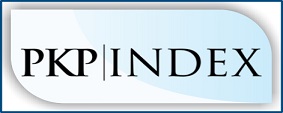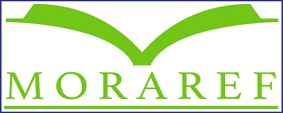GAP ANAGAP ANALYSIS ON RISK BASED INSPECTION (RBI) IMPLEMENTATION AT PT. XYZLYSIS ON RISK BASED INSPECTION (RBI) IMPLEMENTATION AT PT. XYZ
DOI:
https://doi.org/10.31004/prepotif.v5i2.1901Keywords:
Inspection, RBI, Risk, SafetyAbstract
Risk Based Inspection (RBI) has been implemented mainly in oil and gas industry to manage the risk of aging facilities. The RBI plan has also been introduced for new facilities and become part of the design requirements, making it the right time for PT. XYZ to improve their RBI implementation to support the Facility Risk Integrity Management System. This is a semi-quantitative study on primary data collected through focus group discussion using the RBI evaluation parameters based on API 580, API 581, and field observation and secondary data from previous RBI reports, maintenance program, and inspection program. Finally, an evaluation was conducted to assess whether the RBI management strategy has been integrated to the safety and asset management; inspection, testing, and monitoring; and operation strategies. This gap analysis aims to evaluate the effectiveness of the ongoing RBI implementation at PT. XYZ in general while specifically identify the part of RBI and related Asset Integrity Management already implemented and those that still need further improvement. Results show an overall score of 328 of 470, showing a good implementation of RBI. The largest gaps identified are RBI on specific equipment (score=3.0), documented RBI management policy and strategy (score=3.8), risk target and risk acceptable level (score=4.0), and specific damage mechanism components (score=5.3).References
American Petroleum Institute (API) 510 (2018), Pressure Vessel Inspection Code.
American Petroleum Institute (API) 570 (2018), Piping Inspection Code.
American Petroleum Institute (API) 571 (2003), Damage Mechanism Affecting Fixed Equipment in Refining Industry.
American Petroleum Institute (API) 575 (2014), Inspection Practices for Atmospheric and Low-Pressure Storage Tanks.
American Petroleum Institute (API) 580 (2002), Risk Based Inspection Guideline.
American Petroleum Institute (API) 581 (2016), Risk Based Inspection Methodology.
American Petroleum Institute (API) 653 (2014), Tank Inspection, Repair, Alteration, and Reconstruction.
Bertolini, M., et al. (2009), Development of Risk-Based Inspection and Maintenance procedures for an oil refinery. Journal of Loss Prevention in the Process Industries.
Lestari, Fatma., et al. (2020), A Safety Climate Framework for Improving Health and Safety in the Indonesian Construction Industry. International Journal of Environmental Research and Public Health.
Khan, F.I., Sadiq, R., and Haddara, M. M. (2003), Risk-based maintenance (RBM): a quantitative approach for maintenance/inspection schedulling and planning. Journal of loss prevention in the process industries.
Khan, F.I., Haddara, M.M., & Bhattacharya, S.K. (2006), Risk-Based Integrity and Inspection Modeling (RBIIM) of Process Component/System. Risk Analysis.
Khan, F.I., Sadiq, R., and Haddara, M. M. (2004), Risk-based inspection and maintenance (RBIM): multi-attribute decision-making with aggregative risk analysis. Process safety and environmental protection.
Mercer, M. (1998), Occupational health audit, Margeret Mercer extols the virtues of audit as a management tool in the occupational health service.
Downloads
Published
How to Cite
Issue
Section
License
Copyright (c) 2021 Atta Rizky Suharto

This work is licensed under a Creative Commons Attribution-ShareAlike 4.0 International License.
Authors who publish with this journal agree to the following terms:
- Authors retain copyright and grant the journal right of first publication with the work simultaneously licensed under a Creative Commons Attribution License that allows others to share the work with an acknowledgement of the work’s authorship and initial publication in this journal.
- Authors are able to enter into separate, additional contractual arrangements for the non-exclusive distribution of the journal’s published version of the work (e.g., post it to an institutional repository or publish it in a book), with an acknowledgement of its initial publication in this journal.
- Authors are permitted and encouraged to post their work online (e.g., in institutional repositories or on their website) prior to and during the submission process, as it can lead to productive exchanges, as well as earlier and greater citation of published work (See The Effect of Open Access).











